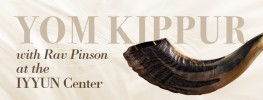Ahavas Olam is a prayer for unity. When we say, “bring us in peace from the four corners of the earth,” we gather the four fringes (tzitzit) from the four corners of the prayer shawl (talit). In absolute reality, there is total unity, but in our world, there seems to be disharmony and division. There are corners/parts to the world. And so, we take the four fringes, which have 32 strings, and bring them together as one, holding them in the left hand and placing them against the heart for the reading of the Shema.
The number 32 denotes the paths of chochmah (“wisdom”) and the idea of bitul (“self-nullification”), which open us up to a higher reality. By bringing the 32 strings together, we evoke the power of chochmah and the idea of bitul-ego abandonment, and through that, we bring peace, harmony, and unity to our own microcosmic world and to the macrocosmic world of which we are a part.
The talit together with its tztizit embraces both unity and diversity. The multiplicity is represented by the fringes on the corners, but the fact that they are part of one garment represents the interconnectedness between all the apparent separate forces. Bringing the corners together as one, we are ready for the Shema-the quintessential statement of God’s oneness.







